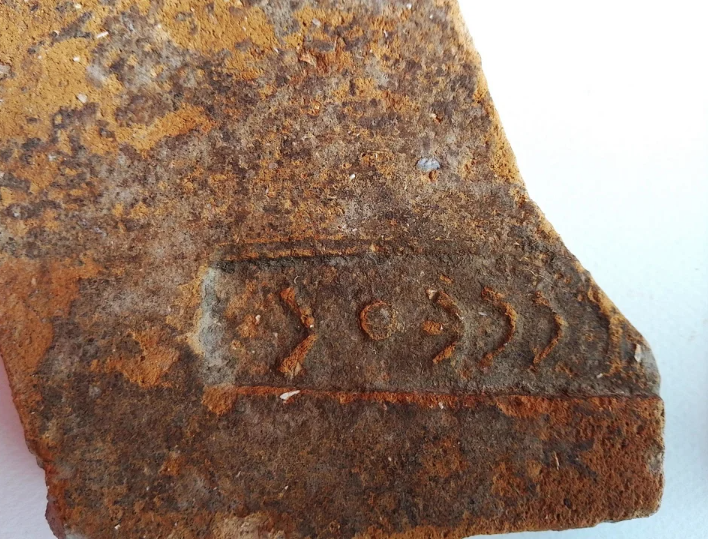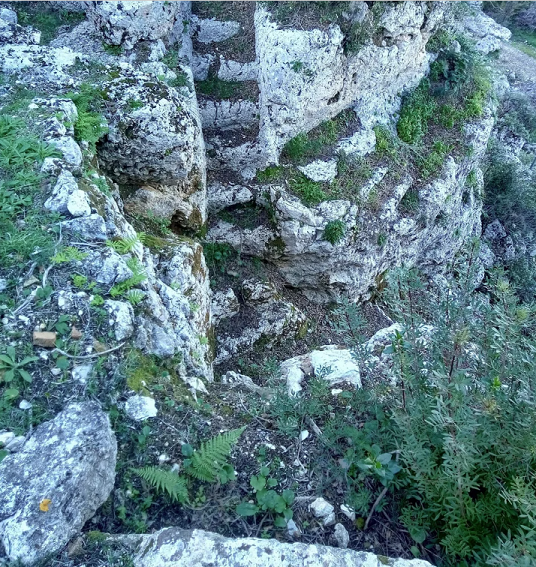New excavations in Ithaca for the legendary Odysseus
- Written by E.Tsiliopoulos
Ithaca, the island that was identified for centuries with Odysseus, is now also acquiring the archaeological stamp of its history.
The Ministry of Culture announced on June 9, 2025 that the monumental complex at the site of the “Homer School” in Agios Athanasios is definitely identified with the Odysseon, that is, with the sanctuary dedicated to Odysseus. This revelation is not just another find, but a historical confirmation that decisively strengthens the bond of Ithaca with its mythical king. This confirmation came after the painstaking work of cleaning, classification, study and further documentation carried out by the team of archaeologists of the University of Ioannina, Giannos Lolos, Christina Marampea and members of the team, on findings from the excavation at the “Homer School”, where tiles with inscriptions bearing the words ODYSSEUS and ODYSSEI were found. The recent archaeological findings were added to those already known, which remained preserved in the Archaeological Museum of Vathea.
Start of the 15th International Conference on the Odyssey in Ithaca
The 15th International Conference on the Odyssey, co-organized by the Municipality of Ithaca and the Center for Odyssey Studies of Ithaca, begins its work today in Ithaca and will last until September 1, 2025.
The theme of this year's Conference is the Homeric Epics in Ancient Drama, however, Mr. Lolos and Ms. Marampea will make important announcements regarding the "Odyssey". All the elements of the latest discoveries will be presented and and a follow-up to the announcement of the Ministry of Culture on this subject. Essentially, we will talk about our conclusions from these investigations, which now prove that the site of Agios Athanasios-Homer's School was the place where Odysseus was worshipped, something proven by the inscriptions.
Homer's School: The location and the architectural remains
According to professor Lolos, within the framework of the University's research program, new excavations are expected in the Northwestern region of Ithaca, although the start date has not yet been determined. The research program, which has been underway since 2018, with the cooperation of the Municipality of Ithaca and scientific institutions, continues to bring to light new data, while the goal is the full promotion and protection of the monument.
According to the announcement of the Ministry of Culture at the beginning of last June, “The site, known as the School of Homer since the beginning of the 19th century, has as its core a large rocky formation, on the eastern slopes of Exogi, in an area with water springs. The excavated antiquities are located on two terraces, which are connected by two carved staircases, and at several lower points. The Upper Andiros is dominated by the remains of a Hellenistic tower (of the 3rd century BC), while most of the Lower Andiros is occupied by a large rectangular building.”
The oldest evidence of human activity at the site is now dated to the Final Neolithic phase (late 5th/4th millennium BC). They include, among other things, several dozen flint artifacts as well as several hundred fragments of pottery. As for the evidence from the Bronze Age, several dozen fragments from approximately 30 different vessels of the late 14th and 13th centuries BC have been identified so far.
Of great interest is the intact underground fountain/cistern in the area, with ashlar masonry walls, one of the few known of its kind. Based on its shape, its structural characteristics and the discovery of Late Mycenaean fragments of kyliks inside, its dating to the Mycenaean palatial phase seems extremely likely, as previous researchers had also supported.
Mycenaean installation at the Homeric School
The Mycenaean installation at the Homeric School probably functioned for the supervision of the ports and the lands and for the protection-management of the rich water resources of the area and can be included in a network of 7-8 Mycenaean sites in the fertile and flexible NW of Ithaca. This network seems to roughly define the major area of the urban (traditionally Odyssean) center of the island during the Mycenaean palatial period (14th-13th century BC).
As for historical times, the maximum volume of ceramic material dates back to the Hellenistic and early Roman periods (up to the 1st/2nd century AD). In the total of large vessel shards, 8 fragments of periranterias, which are common in sanctuaries, have been identified so far.
Archaeological findings
In addition to a number of small objects, the groups of findings include: a total of 34, up to moment, fragments of clay offerings, a few dozen clay agnithas, a small treasure of gold jewelry and other, mainly bronze, jewelry and objects. 100 and more nomi s from various cities (3rd century BC to 2nd century AD), reveal a flow of visitors to the site.
From the ongoing work of sorting and cleaning (as appropriate) thousands of fragments of Hellenistic/early Roman roof tiles, 14 samples of stamped tiles have been identified, with Greek and Latin inscriptions: one bears a stamp, with part of the inscription and the separate letter D (public ;), another is stamped with the letter complex ΔΗ, to the left (mirrored) as an abbreviation of the word δόμειος/δόμειος(;), while 2 retain part of the name of Apollo Aghieos and indicate a local cult.
Inscriptional finds with references to Odysseus
Recent processing of the material yielded a specimen that preserves a seal of major importance, with the name [Οδ]ΥCCEOC (in the genitive) to the left. Another fragment shows an engraved dedicatory inscription, with his name probably in the dative, perhaps by a pilgrim: ΟδΥΥC[CEI
In the context of the interpretation of the complex, the findings of the excavation by W. Vollgraff (1904) at Ano Andiros were taken into account. Some of these are from the late Roman period, including a miniature bronze bust with the features of Odysseus, according to the rendering of his form in Greco-Roman art, but also in the bronze coins of Ithaca of the 4th-3rd century BC.
Heyday and dating of the building complex
The heyday of the building complex is placed in the Hellenistic to early/middle Roman periods (up to the 1st/2nd century AD). The complex is characterized by robust structures on terraces, incorporates impressive elements of carved architecture, as well as niches for votive offerings or inscriptions, which testify to the intensive cultic use of the Lower Anderos.
The Hellenistic monumental complex can now be identified with certainty with the Odyssey of Ithaca (with the existence of a sanctuary/hero of Odysseus), which is mentioned, together with related games (the Odyssey), in a resolution of the Ithaca city council of approximately 207 BC from Magnesia in Asia Minor. The character of Odysseus and his exact position in relation to the games have been the subject of fruitful scholarly debate since the 1930s.
The cult of Odysseus in Ithaca
Today, about a century after the discovery of the engraved dedicatory inscription ΕΧΗΝ ΟδΥΚΕΙ on a fragment of a Late Hellenistic clay mask from the Cave of Ormos in Polis, the two new epigraphic testimonies from the same period (ΟδΥΚΕΟΚ and ΟδΥΚΕΙ) for the later cult of the hero in the N.W. Ithaca, now come, in combination with the other available data, to document the development of a prominent public complex at the site, with a major role in the religious, social and possibly political life of the Ithacians of the Hellenistic-early Roman times, but also with a broader pilgrimage character.
Related items
-
 Bloody incident in Vorizia, Heraklion – Dead and injured after explosion and exchange of fire
Bloody incident in Vorizia, Heraklion – Dead and injured after explosion and exchange of fire
-
 iPhone 12 Withdrawn from Greek Market over Radiation
iPhone 12 Withdrawn from Greek Market over Radiation
-
 Sheep pox outbreak: Cases detected in 250 farms across Central Macedonia – 57,000 animals culled
Sheep pox outbreak: Cases detected in 250 farms across Central Macedonia – 57,000 animals culled
-
 TV chef arrested for hiding millions in income - not paying taxes
TV chef arrested for hiding millions in income - not paying taxes
-
 New US Ambassador Kimberly Guilfoyle arrives in Athens today
New US Ambassador Kimberly Guilfoyle arrives in Athens today
Latest from E.Tsiliopoulos
- Bloody incident in Vorizia, Heraklion – Dead and injured after explosion and exchange of fire
- iPhone 12 Withdrawn from Greek Market over Radiation
- Sheep pox outbreak: Cases detected in 250 farms across Central Macedonia – 57,000 animals culled
- TV chef arrested for hiding millions in income - not paying taxes
- New US Ambassador Kimberly Guilfoyle arrives in Athens today



